Capsule Review: 2002 Volkswagen GTI 1.8T

What a long, strange trip it’s been! By the year 1999, the VW GTI had been a flop with the critics for fifteen of its seventeen years in the market. Yet the car still had credibility with the people who actually bought it, and it was still considered to be a desirable, premium vehicle. More importantly than that, the hardcore fans had noted the release of the G.O.A.T. and expected that the Mk4 Golf would feature the same helping of Piech magic.
It did—sort of.
No, not the stupid wheels! Look at the line formed by the back door. Now look at the line formed by the rear hatch and taillight cutout. Now try to tell me this car wasn’t designed with the same care that Giugiaro gave to the original. Finally. After fifteen years of indifferent, bulky-looking compact VWs, this was a hurricane blast of fresh air, inside and out. With this car, Volkswagen finally embraced the “premium” thing with both arms and the result was spectacular. Better than that, the Mk4 finally felt like a value proposition. Nobody else offered a car with this kind of interior, this kind of style, this kind of attitude, for this kind of money.
Your humble author wasted no time in becoming the owner of a Brazilian-built 2000 GLS 1.8t four-door, a car that was such a cult classic that I sold it for what I’d paid for it new when it was two years old and had 25,000 miles on it. The 1.8t that had enlivened the Passat worked similar magic in the Golf, allowing it to run more or less heads-up with the 5.0 Mustangs that still roamed the streets at that time. A whole generation of young people fell in love with the Mk4 — girls with the stylish Jetta 2.slow, boys with the 1.8t, old men with the VR6, which picked up a four-valve head and broke the 200-hp mark halfway through the model run. The whole “Dubber” culture, which had been tottering along unsteadily on the last legs of the Boomer air-cooled freaks, picked up the kind of momentum commonly found by jumping off the Golden Gate Bridge and never looked back.
(Apologies for the stock photos — JB)
Our test example is part of VW’s “heritage” fleet, a two-door 2002 GTI 1.8t, with the upgraded 180-hp engine that arrived for that year. Ooh, this one’s just as nice as I remember. These cars were subject to a sort of Holy Trinity of failures — window regulators, coilpack failures, and peeling plastic — but a test roll of the windows fails to see one drop into the door and the response to the throttle is proper strong.
Compared to the VR6, the 180-horsepower 1.8t is better in all respects. It spins faster, makes more power under the curve, and demonstrates more flexibility. Most amazingly, it has five valves per cylinder, something that Yamaha had done in its motorcycle engines to great acclaim and the engineering of which was an unequivocal shot across the bow of the Japanese automakers who hadn’t managed to do it despite sharing a country of origin with the technology’s originators. The only problem is that it sounds terrible, replacing the Italian-supercar growl of the six with the asthmatic wheeze of the blown four. Blech. Roll the windows back up, luxuriate in the silence of the thoroughly insulated cabin, and hustle along.
Which you can do. Finally, a GTI that kind of handles by modern standards. On a racetrack, it would grind the outside sidewall with the single-minded determination of an Amish carpenter but on the open road these cars are a good mix of ride quality and usable grip. I remember years spent thrashing through Ohio’s Hocking Hills in these cars, abusing the trustworthy and granular lift-throttle rotation, using the torque to pull me up the grades and then bouncing the redline in long exhilarating moments before standing on the nose for the next corner. The only caveat was the brakes, which could pick up a lot of heat in a relatively short time and take an unannounced vacation as a result.
This isn’t a light car — 2,950 pounds compared to the 3,397 of my Accord Coupe, which brings another hundred horsepower and a wealth of additional features to the party — but what you pay in weight you receive back in solidity. Oddly, the Golf felt heavier, more inert, more solid, than the B5-generation Passat. Perhaps it’s not surprising, since the larger car didn’t actually scale that much more.
Regrettably, the Mk4 didn’t reverse the Mk3 trend of smaller window openings. This is the darkest interior yet, the least visibility, the thickest pillars. That C-pillar that satsifies so in the aesthetic sense turns out to be a bit of a hassle on the road, particularly in the two-door models. The windowsills, too, are a bit higher than I’d like, a problem made more explicit by having recently driven the earlier, airier cars.
If you can live without the character of the VR6, the Mk4 1.8t possesses a superset of its predecessor’s abilities and throws in a double helping of design excellence as a bonus. Finally, VW had a winner on its hands. The Euro and Brit press fought tooth and nail to compose the most symphonic of encomia to the Golf and its almighty father, Dr. Piech. To own a turbo Golf in those days was to be a man beyond reproach, identified as an aesthete and tastemaker far above the crass material statement of BMW ownership yet deeply versed in the corksniffing snobbery of “German-engineered” automobilia.
No, it wasn’t as good a car as the Passat. It didn’t handle as well, it was less spacious, it had some cheaper bits on the inside, it wasn’t as slippery, the fuel economy in real-world use was actually worse. But it was so much classier-feeling than anything else in the market that it didn’t matter. The Civic, Sentra, Focus, Cavalier — none of them even came close. VW sales continued to shoot through the roof and company spokespeople started to babble about doing a million units a year in this country.
And then, disaster struck. VW’s attempts to address its price and cost issues through the supplier-pinching magic of a certain J. Iganacio Lopez, a man who was so good at creating profit where there had been none that VW gladly paid General Motors $100 million for poaching him and considered it money well spent, started showing through. And now, let’s quote John Updike’s Piet Hanema, from the brilliant 1968 book, “Couples”:
Let me tell you about houses… Everything outs. Every cheat. Every short cut… Don’t think because you cover something up it isn’t there. People have a nose for the rotten and if you’re a builder the smell clings.
The first big problem with the 1.8t-powered Volkswagens was, strictly speaking, not VW’s fault. The engine was designed to take just three quarts of oil, a specification cheerfully ignored by lazy dealer personnel who filled it with five anyway and caused all sorts of havoc. The company bowed to the pressures of reality and changed the oil pan to accommodate what the service monkeys were going to do anyway.
After that, however, it was all downhill. The cars developed a reputation for being stranded on the road and even the faithful started to make jokes about it. When the ultra-premium soft-touch interiors started disintegrating into pockmarked foam, the bloom went well and truly off the rose for good. The expansion of VW’s customer base in the Mk4 era naturally meant that it would now include some people who expected the Golf to be as bulletproof as a Camry and who took it personally when that didn’t turn out to be the case. A lot of young people had a Mk4 for their first, and last, Volkswagen.
This was a candle that shone brightly but not long; the first truly great Golf in twenty years but also one that couldn’t shake the worse parts of its predecessors’ legacies. The rest of the story, you probably know: The fifth-generation GTI was a “Fast” and brilliant automobile that traded a bit of premium feel for a lot of dynamic capability and some reliability improvements, and the sixth-generation capitalized on those improvements in incremental fashion, becoming a very good car in most respects.
Stay tuned for the true end of this tale: a test of the new Mk7 GTI, coming later this week.
(Disclosure: VW provided travel and accommodations to TTAC, one half of that travel being a red-eye flight in the back corner of a 767 where a not unattractive young Indian woman put her bare feet up against the interior wall of the plane and used your author as a pillow in a manner best described as “nonconsensual”.)

More by Jack Baruth
Latest Car Reviews
Read moreLatest Product Reviews
Read moreRecent Comments
- Jalop1991 This is easy. The CX-5 is gawdawful uncomfortable.
- Aaron This is literally my junkyard for my 2001 Chevy Tracker, 1998 Volvo S70, and 2002 Toyota Camry. Glad you could visit!
- Lou_BC Let me see. Humans are fallible. They can be very greedy. Politicians sell to the highest bidder. What could go wrong?
- SPPPP Vibrant color 9 times out of 10 for me. There may be a few shapes that look just right in metallic gray, for example. There are a few nices ones out there. And I like VW "White Silver". But I'd usually prefer a deep red or a vibrant metallic green. Or a bright blue.
- 28-Cars-Later Say it ain't so, so reboot #6* isn't going to change anything?[list=1][*]V4-6-8 and High "Tech" 4100.[/*][*]Front wheel drive sooooo modern.[/*][*]NOrthSTARt.[/*][*]Catera wooooo.[/*][*]ATS all the things.[/*][*]We're *are* your daddy's Tesla. [/*][/list=1]



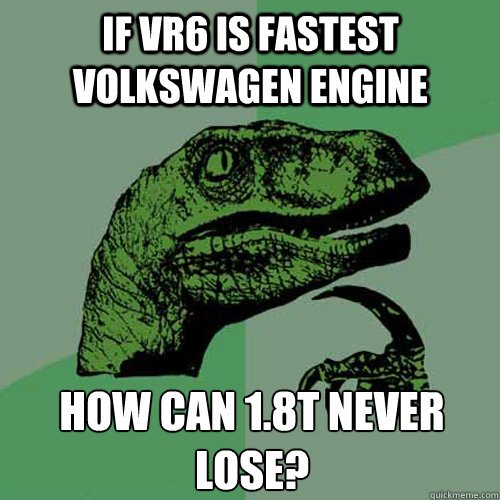















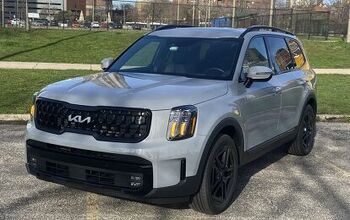
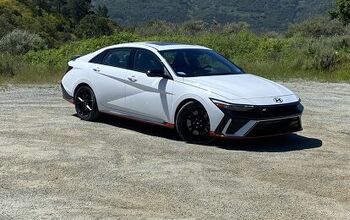
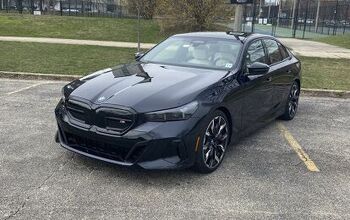
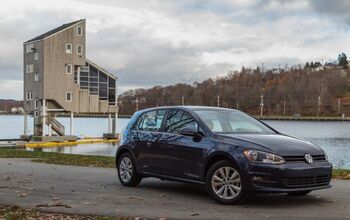

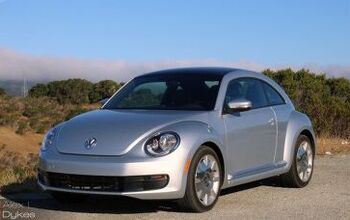
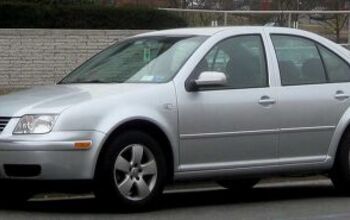
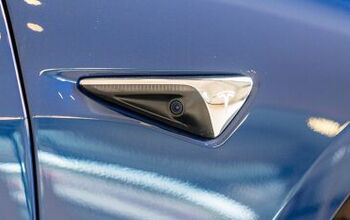




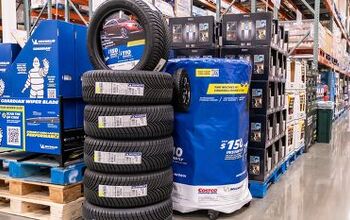
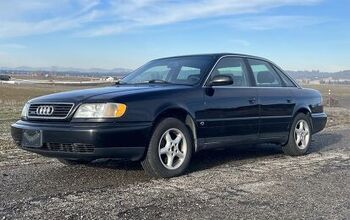
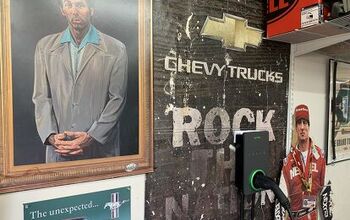



Comments
Join the conversation
Oh yes the nightmares! My wife's obsession with the Golf drove me insane, eventually her too. Regardless, she ignored my criticism and bought 2. I cannot recall a car with so many defects, so many breakdowns, and so many tows to the dealer. Window regulators replaced 4 times, leaks, rubber gaskets, inoperable sunroof, numerous engine disasters, transmission nightmares, and so on and on. I hated VW for producing a car with so much history and potential in Mexico. Disastrous mistake VW!
I realize this is a dead thread but heres my 2 cents... News flash: NO car is 100% reliable.Any car on any given day is susceptible to any number of failures or breakdowns. This applies from Acura to Yugo. I recently bought a 100k 04 gti vr6. Car is impeccable inside and out. Interior (which is not falling apart except for the headliner) is gorgeous and looks practically new as does the exterior. Quick, awesome handling, and runs perfect. It sounds awesome and I get compliments everywhere I go. Previous owner obviously took really good care of it and knew his VWs thoroughly. Which brings me to my next point... your used car is typically only as good as the previous owner (s) maintained and treated it. Though I'll admit if I bought a brand new car and it suffered some catastrophic failure early in its life that would leave a bad taste in my mouth. Can anybody tell me an automotive brand that never had major failures or recalls at some point? You could make a thread about good/ bad experiences from every single make/ model ever produced. With that being said, i enjoy working on cars, to the point I'm almost looking forward to the next thing to work on. Learning and upgrading is actually a labor of love for some of us.This is my 3rd golf and won't be my last. All were used but were well taken care of. Yes they are quirky and particular, but if you know these cars then you know what they need and require. Sure the maintenance is a bit more, but worth it to me. Its a trade off for a daily driver that you can't stop staring at and look for any reason to take a ride to the store. My gti has suspension upgrades like st coilovers, h&r sway bar, and ecs tuning lower control arms with poly bushings. The aftermarket for these cars are endless, which is fun for many of us. The car screams on the exit ramps :) If you don't enjoy tinkering with cars then buy a used Toyota and bore yourself to work everyday. Ive been driving golfs for years (2.0s and vr6) and have never experienced a breakdown, being towed or catastrophic failures. - knock on wood Ps I'm getting a tune soon from United motorsports that will give me 15-18 extra hp for 300$. Also increases mpg which I'm already averaging around 24 (city highway combined). Combined with intake and magnaflow exhaust I'm sure to be pushing 225 horses. I got into a race on the highway the other day and at 130 mph car felt sturdy and tight (like I was going much slower) and had much more to go but we caught up to the next pile of cars so had to let off. Pss do your homework. Vw likes higher octane gas, quality synthetic oil and Bosch or better replacement parts.Buy a duralast maf sensor and be ready to replace it in 2 months (If it lasts that long) Preventive maintenance is the best medicine for any car. Do your homework and stop fuckin complaining when your 2500$ 10 year old car needs a 02 sensor or a window regulator. You roll the dice on any used car you buy. Surprisingly some people never do maintenance and just drive the car,now your buying there lack of care which become problems for you. EVERY car requires SOME amount of work and upkeep. Some more than others. I know Toyota owners that swear by there car, yet have already replaced there transmission that only had only 30k! I guess it's all about what your willing to put up with.